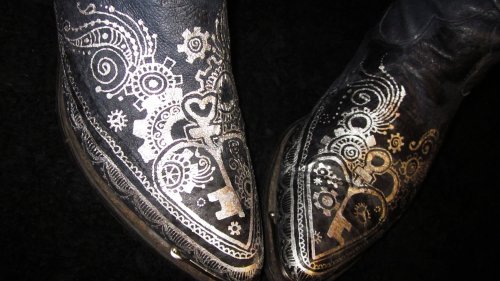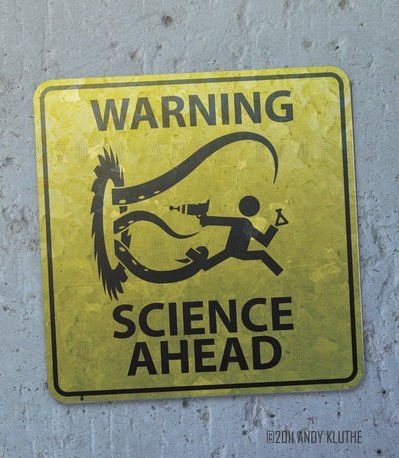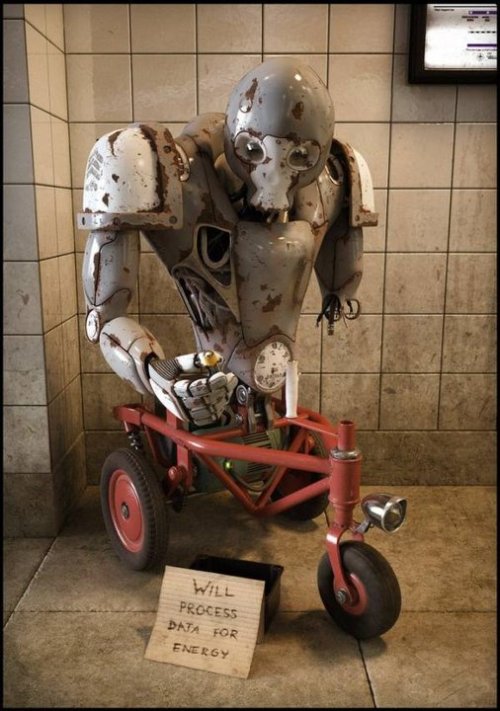
When a writer talks about a ‘strong’ character, they don’t actually mean that the character is physically able to lift a horse or beat up ten opponents or swears like a shearer. A strong character is a complex character, three dimensional, not a stereotype. There have been some work put into constructing the character. The character lives and breathes on the page.
Lately, there has been a trend toward ‘strong female characters’ in books, television, and Hollywood movies. However, it appears that the multiple meanings of the word ‘strong’ has confused a lot of people. So, here are some questions you can ask yourself when trying to decide if a ‘strong female character’ is strong in name only.
1/ Are her actions over-the-top to overcompensate for the lack of other female characters or a personality of her own? SFC often display exaggerated ‘tough’ mannerisms that no man would get away with, or take risks that are stupid rather than brave.

Think of the characterisation of Starbuck, Kara Thrace, during the first season of the new version of Battlestar Galactica. When we first encounter Kara Thrace, she bears a strong resemblance to the original 1978 Starbuck character: both were portrayed as hot-headed and cocky fighter pilots, with a tendency to challenge authority head-on and get into trouble. Both were avid gamblers and enjoyed drinking, smoking cigars, and casual sex. Except Kara was even more full on than the original Starbuck. She did stupid things that a trained warrior would never do. However…
All kudos to both the writers of the series and actor Katee Sackhoff for being able to give this version of Starbuck to opportunity to grow and change.
2/ Is she ‘every bit as good as a boy’? In other words, is she simply a male character in every aspect but her gender? Is she a classic Patriarchal male in all her strengths and virtues, and in her flaws, as well as her values – with only her gender ticked as ‘woman’ rather than ‘man’?

Sergeant Calhoun
Look at Sergeant Calhoun from Wreck-it Ralph. Here is her character description from the Disney-Wiki:
Calhoun is hardcore, tough, and incredibly strict. She commands her troops with a firm and domineering hand, and exhibits a fierce tenacity in which failure is never an option. She has no tolerance for shortcomings, and doesn’t hesitate to roughly reprimand her soldiers, and additionally seems to enjoy goading them with taunts to increase their drive. Although Calhoun comes off at first as crass and callous, she is very serious and stoic when not engaged in gameplay. Her tragic backstory has left her heartbroken and untrusting, with a dry sense of humor. It is her backstory and her dedication to her job that she appears to consider herself a soldier first and woman second.
The comment that she is “a soldier first and a woman second”is telling. I’m yet to hear a man described as ‘a soldier first and a man second’, because, of course, the default setting for soldiers are that they are men.

I’m also thinking of Sharon Stone’s The Lady in The Quick and the Dead. Clint Eastwood – in his spaghetti western era – could have played her role. Her backstory was the same backstory for a dozen Western movies.
Tasha Robinson wrote a compelling argument against Strong Female Characters during last year’s summer blockbuster season, lamenting that: “Bringing in a Strong Female Character™ isn’t actually a feminist statement, or an inclusionary statement, or even a basic equality statement, if the character doesn’t have any reason to be in the story except to let filmmakers point at her on the poster and say ‘See? This film totally respects strong women!'” The irony of the celebration of and hunger for Strong Female Characters is that they perpetuate macho notions of strength and capability, which just happen to be communicated by women and girls.
From the article I’m Sick of Strong Female Characters in Film by Clem Bastow
3/ Does the character have agency and a voice of her own? Does she make her own decisions and take responsibility for her own actions? Does she disappear during the action? Is she the rescuer or the rescued? Does she act and her actions impact the plot, or does most of the action take place around her?
Part of this problem is the idea that behind every great man is a great woman. It means that the woman’s actions are still being defined by a man. Why isn’t the woman just out there doing for herself?
This one can be tricky. Consider Valka from How to Catch Your Dragon 2; she plays no real part in the plot after her build-up as an awesome character. Of course, overcoming this lack of voice and agency makes for a brilliant story, like Margaret Atwood’s The Handmaid’s Tale or Charlotte Bronte’s Jane Eyre. Female characters lacking in voice and agency tand not to be that memorable. Gee, I wonder why?
4/ Does she end up as the trophy for the male Protagonist? This is a Disney favourite. Think about Jasmine from Aladdin and Meg from Hercules.


They were sassy. Independent. Actually played a part in the resolution of the story. And still ended up as the trophy brides. This happens so much, I could let you make your own list…
It doesn’t matter how sassy your SFC is, if at the end of the story she is the ‘prize’ won by the hero. The very worst example I can think of is Kate from the movie, Hackers. Kate is the only girl in the hackers group AND she is the ‘prize’ in a bet between her and the protagonist, Dade. I came out of that movie completely enraged.

Kate was played by a very young Angelina Jolie.
5/ Is the SFC complex and three dimensional? Or is her ‘strength’ her only defining characteristic? The white-haired witch from the movie, The Forbidden Kingdom, is powerful, and evil, and we have no idea why. Oh, she wants to be immortal … but we are never given any backstory or understanding of her character. She is just strong, physically and magically.

As a child, my youngest daughter loved this character because she was so strong, and she wanted to be that strong with magic. I’m not saying that children don’t love complex characters, but when your target audience is older, you need more than strength to define a character.
Gazelle from the movie, Kingsman: The Secret Service, is another of these strong girls with one dimension characterisations. Imagine how much more interesting her character would have been if she had been allowed some dialogue and an insight into her motivations. Was she in it for the money? Did she hate humanity? Was she in love with Valentine or his ideals?
6/ Is she the token female in an all male cast?



Oh look, a girl on each side…
Need I say more? Others have written reams about how badly the character of the Black Widow is being treated in these movies.
7/ Could all her strengths be defined as masculine strengths, rather than her being strong in her own unique way? In other words, could your SFC be replaced by a male character and no one would notice the difference?
Strength comes in many different forms. If you classify as strength only in terms relating to overt masculinity, you are misunderstanding what strong means. I want to see a strong Female Character who can rejoice in her ‘female’ and girly strengths. She laughs or cries because showing emotion isn’t a weakness. She is strong – not in spite her femininity – but because of it, while at the same time not letting her femininity define her.











































